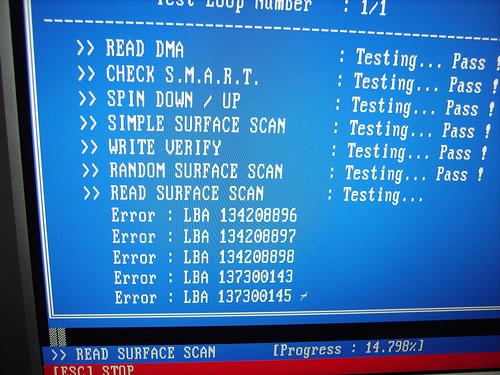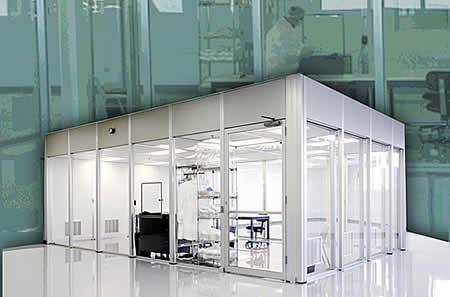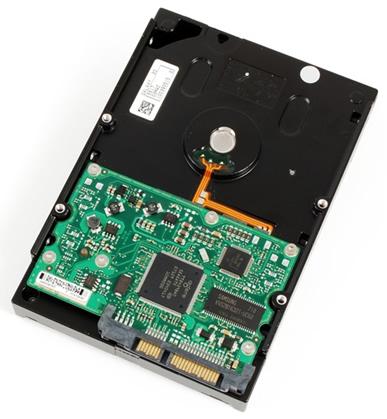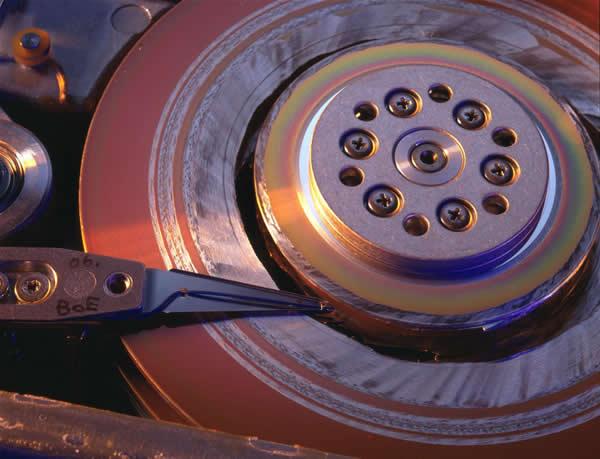Data Recovery & Retrieval in Budapest, Hungary
|
Evaluation (not needed for logically damaged memory cards, pen drives, and flash drives) |
We will determine the condition of your drive and your data and the likelihood of successful recovery. | Free Evaluation |
| Logical Damage Recovery | If your drive’s logical damage can be repaired and your data recovered | 40,000-50,000 Ft + VAT |
|
Hard Drive Physical Damage Recovery |
If your drive requires a system board swap and firmware modification | From 100,000 Ft + VAT (+ price of matching system board if not in stock) |
|
Hard Drive Physical Damage Recovery |
If your drive must be opened for a read/write head or other component swap or a platter exchange. | From 150,000 Ft + VAT (+ price of a matching donor drive if not in stock, or for drives from 3TB capacity or larger than that) |
| Miscellaneous Recovery | If your data is on a memory card, pen drive, flash drive, etc. and has logical damage (i.e. can still be recognised by a computer) | 30,000 - 40,000 Ft + VAT |
| Miscellaneous Recovery | If your data is on a memory card, pen drive, flash drive, etc. and is physically damaged (i.e. is NOT able to be recognised by a computer) | 70,000 - 120,000 Ft + VAT |
|
SSD (Solid State Drive) Physical Recovery |
If your SSD is trashed. | From 160,000 Ft + VAT (depending on the complexity of the controller chip and the capacity of the SSD) |
If you’re reading this page, then you have probably had something go wrong with your hard drive (or hard disk), you can’t access your data, you have no backup copy, and are wondering what to do about your lost files, photos or music. Before you can make this decision, it is important to know a little more about hard drives, data loss, and data recovery.
The first distinction to learn is that there are two major categories of hard drive (HDD) problems: logical damage and physical damage.
Logical damage refers to damage to the file system on the hard drive, whereas physical damage is any damage to the mechanism of the hard drive, either the electronics, firmware or internal mechanical parts such as the motor, spindle, drive platters and heads. The other main point is that particularly for physically damaged drives, it is not economical to think in terms of "repairing a hard drive" or "hard disk restoration", due to the low cost of new hard drives that have three year guarantees. Then the focus is solely on the process of data recovery, i.e. retrieving the important information you had stored on your hard drive.
If your data is on not a hard drive, but rather an XD card, SD card, Compact Flash Drive, Pen Drive or Flash Drive, etc… Please see the “Other Types of Data Recovery” section below).
A more common kind of data storage device being fitted to modern laptops and computers is the Solid State Drive or SSD (otherwise known as a flash drive). These drives have no platters or moving parts, and are less susceptible to damage, however problems can occur with them. If you need data recovery from an SSD, Please see ExpatTech and Solid State Drive Data Recovery for more information.
|
Fill out our data recovery form and get help and/or a price quote now: ExpatTech Data Recovery Form |
Data Recovery Background Information
Hard Drive Logical Damage
Logical damage occurs when the mechanical parts of the drive are all functioning, but special areas of the drive are corrupted, damaged, or erased in a way that makes the drive not bootable, mountable, or, otherwise, accessible. User data may also be damaged, in addition to being inaccessible. These special sections include things like the boot sector, file systems, file allocation tables, etc . . . Logical damage can occur from power outages, viruses, and even improper use of formatting or partition software or utilities. Symptoms include inaccessible data, non-bootable drives, and sudden system crashes or software failures.
Hard Drive Physical Damage
Physical damage refers to an electronic or mechanical problem with the drive. An electronic problem might include such issues as burned-out or shorted-out firmware (logic / system boards) within the drive. A mechanical problem can include damaged read/write heads, a damaged actuator arm, a burnt-out motor, scratched or otherwise damaged platters in the disk, or head crashes. Physical damage can occur from flooding (water in the drive), physical shock (dropping a drive/computer), fire (overheating), drive expiration (old age), and other various traumas. Symptoms include clicking or straining noises from the drive, drives that sometimes boot and other times don’t, burn-out marks on the underside of the drive, and drives that don’t spin. If you suspect physical damage, it is imperative that you get the drive to a specialist as soon as possible. Sometimes a noisy drive may only have the capacity to be accessed a few more times before it becomes utterly unreadable.
Data Recovery Solutions
Evaluation:
 The first step in any data recovery and retrieval is a proper evaluation of the problem. By evaluating the hard drive, we are essentially determining the extent of the damage and thus which course of action is appropriate. The majority of hard drives that have simply developed errors or started misfunctioning during normal use will not have to be opened in order to rescue/recover/retrieve the data. These hard drives are most likely to be suffering from logical damage, although physical damage can also occur 'spontaneously'.
The first step in any data recovery and retrieval is a proper evaluation of the problem. By evaluating the hard drive, we are essentially determining the extent of the damage and thus which course of action is appropriate. The majority of hard drives that have simply developed errors or started misfunctioning during normal use will not have to be opened in order to rescue/recover/retrieve the data. These hard drives are most likely to be suffering from logical damage, although physical damage can also occur 'spontaneously'.
If however your hard drive or hard disk has suffered a physical trauma such as being dropped then the opposite is true, it is more than likely that the drive will need to be opened in order to carry out the data recovery. This is particularly true if after suffering the physical trauma the drive produces clicking or any other strange noises when operating, or in a worst case scenario the platters in the hard disk will simply not spin when the drive is powered on. In these cases of physical damage you need to be aware that the drive itself will not be repaired and returned in working order - the emphasis is purely on recovering the data itself in a useable format.
Logical Damage Recovery:
Any uncorrupted data can usually be recovered using special data recovery software/utilities. Before using this software, the drive must be removed and imaged. Imaging the drive means making an exact copy (image) of the contents and then actually doing the recovery from the image instead of from the actual drive. Since many of the recovery tools are quite invasive, performing operations on an image of the drive is the safest way to proceed. Once an image of the drive is obtained, the software required to access the data varies depending on the problem. In best-case scenarios, the drive can be logically “repaired” and the data accessed quite normally. Other types of damage require that the data be pulled bit by bit and reassembled using specialist data recovery software.
ExpatTech and Logical Damage Recovery:
At ExpatTech we own and command all of the tools necessary to recover/access client data on drives suffering from logical damage. Additionally, once your data is rescued, we can, optionally and if necessary, reformat your drive, reload your operating system, reinstall your drivers and software, and return your data to its former location(s).
|
Fill out our data recovery form and get help and/or a price quote now: ExpatTech Data Recovery Form |
Physical Damage:
Just as there are a great variety of physical problems that can occur with your hard disk, so are there a great number of possible solutions. It should be reiterated that proper evaluation is necessary in order to know how to proceed. If the problem is electronic, sometimes damage is visible on the system board which is affixed to the underside of the drive. If the damage is contained to this board, then (depending on the brand) a matching board can sometimes be swapped out for the damaged one. This process would simply require finding and purchasing an exact match for the damaged drive and then performing the swap.
Sometimes, a hard drive that is “on its last legs” can be accessed a few last times by changing its operating environment. These changes include changing the type of connection with the computer (SATA to USB, IDE to USB), changing the angle of the drive, changing the temperature of the drive, and changing the operating system accessing the drive. The objective is to access the hard disk long enough to get a disk image so that a recovery can be performed on the data copy.
If the drive’s physical damage is deemed to be actually inside of the drive, then the drive must be opened. A drive must be opened in a clean environment (see the “About Clean Rooms” section below). Once the drive is opened there are 3 possibilities:
1. The platter(s) are ruined.
Some types of physical damage such as head crashes and separated read/write heads result in scratched platter(s) (disks). If a platter is filled with scratches, then your drive is (probably!) un-recoverable. In some cases the platters can be cleaned or resurfaced enough to allow a successful data recovery, if not of all the data at least a portion of it
2. A component needs to be replaced.
Sometimes there is one component inside a drive which is clearly not operating or is damaged. Assuming the platters look good and that a matching drive can be located and purchased, faulty parts like actuator arms, read/write heads, and some motors can be replaced. Again, keep in mind this is in order to get the drive working temporarily in order to recover the data, not to "fix" the drive so it can continue to be used as a functional hard disk.
3. The platter(s) need to be exchanged.
If the physical problems with the drive cannot be easily fixed, but the platter(s) are intact, then often a platter exchange will be the best course of action. A platter exchange basically means transferring the platter(s) from the broken drive to a functional one. The working one must be the exact same make and model as the broken one, and in addition within the models the firmware and controller chips must be exact matches. Our data recovery partners have a database of hard drives for just this purpose, and if not available some intense internet searching can also provide results. If a matching drive can be found then the platter(s) can be transferred to the new drive using a platter exchange tool (see “About Platter Exchange Tools” below).
It is important to note that even if a part inside the drive is successfully replaced or the platters are successfully swapped, that the goal is to get the drive running just long enough to get a disk image and retrieve or recover the required data. The “repaired” drive should not be used after such a process has been carried out on it, and as such will usually not be returned to the client.
About Hard Drive Platters
Inside a hard drive are disks that hold the user data and other information about the drive. In the technical world, these disks are often referred to as “platters”. The larger the drive’s capacity, the more platters are inside. The more platters that are inside, the more difficult it becomes to perform invasive recovery operations.
About Clean Rooms
It is absolutely mandatory that if a drive must be opened to recover the data, it be done so in a very clean environment. The most expensive way to do this is in a specially designed room called a “clean room”. A clean room can cost tens of thousands of dollars and is one of the reasons that data recoveries can be so expensive. If the data being recovered is “life or death” (i.e. very important) and money is no object, then using a company which has a clean room is the preferred method. Clean rooms are designed and built to exacting standards and official ratings exist to quantify a room’s level of cleanliness. These ratings are based on “dirt” particles per cubic foot to be found within the room.
cost tens of thousands of dollars and is one of the reasons that data recoveries can be so expensive. If the data being recovered is “life or death” (i.e. very important) and money is no object, then using a company which has a clean room is the preferred method. Clean rooms are designed and built to exacting standards and official ratings exist to quantify a room’s level of cleanliness. These ratings are based on “dirt” particles per cubic foot to be found within the room.
Although companies with clean rooms often won’t admit it, successful recoveries can be completed in any clean environment. The repair space doesn't need to be absolutely sterile. Hard drives are designed to encounter some dust particles during their lifetime. When a hard drive powers up, the platters begin to spin to create the air cushion on which the read/write head(s) will float, but the secondary effect of the spinning is the removal of any dust particles that may have settled on the platters. These particles are flung into specially designed receptors on the inside walls of the platter housing. Drive manufacturers have always anticipated the presence of some dust in and around the drive. So, if the data importance or budget for the recovery is limited, using an alternative option like a “clean box” is a possible solution. A clean box resembles an incubator and can be constructed using supplies from a local hardware store. A well constructed clean box can easily support platter exchanges and other open drive operations without getting foreign particles on the platters.
If your life memories or your business or job is riding on recovering your data and money is not an issue, then we will refer your drive to our data recovery partner. Our partner has a fully functioning clean room and ten years experience recovering data from hard disks manifesting a wide variety of physical damage.
About Platter Exchange Tools
A platter exchange tool is a very specialized piece of data recovery equipment. They can cost several thousand dollars and are quite hard to obtain. Their sole purpose is to transfer the internal disks (platters) from one drive to another. The need for this tool is clear if you understand a bit more about how platters relate to one another inside of the drive. If your drive has 5 platters inside, you might think that the drive would not write to the second platter until the first was filled with data. But, in reality, all of the platters are written to simultaneously. This fact means that a single file has its parts spread across multiple platters. Data exists in virtual columns that pierce the platters perpendicularly. These data columns demand that the platters stay absolutely fixed relative to one another. If one disk rotates one millionth of a degree in relation to the others, then all of the data on all of the disks is lost forever. A platter exchanger tool works by sitting on top off the platters while they are still locked into the drive and then cinching inward until the platters are secure. This mechanism and other locks ensure that the platters can be extracted with zero rotational or vertical movement.
ExpatTech and Physical Damage Recovery:
At ExpatTech we offer an alternative to high-priced data recovery which can cost hundreds of thousands of forints. We have experience in correcting system board problems and diagnosing the various types of physical damage, such as head crashes or the heads being unable to position themselves. For the more serious cases of (internal) physical damage, our partner has their own platter exchange tool and fully functioning clean room that meets all the international standards for when opening the drive is necessary.
ExpatTech and Solid State Drive (SSD) data recovery:
Our partner has recently acquired a new machine that allows them to fix errors in the controller chips in Solid State Drives, which is the most common kind of problem these SSDs suffer from. The symptom is usually that the drive is no longer recognised by any computer, even though it powers on. If you have any issue with your Solid State Drive, contact us now for assistance in getting your data back!
Other Types of Data Recovery
Of course it’s not always your laptop or desktop HDD hard drive that can become damaged. Sometimes inaccessible data can reside on a SD (Secure Digital) Card, CF (Compact Flash) Card, xD Picture Card, Memory Stick (pen drive), MicroDrive, SmartMedia Card, MMC (MultiMediaCard), MicroSD, MiniSD, or SDHC card.
ExpatTech and Miscellaneous Data Recovery:
ExpatTech can help rescue your photos or other data from any of the aforementioned cards and sticks. Whether the damage is logical or physical, we have the resources to recover your data. Our partner has a specialist machine dedicated to repairing damage to the controller chips resident in the various cards listed, so even if your pen drive or SD card is not recognised by a computer or any device, we can get your data back.
Disclaimer
We make absolutely no guarantees about our data recovery process. We do our best to rescue the maximum amount of data possible from your drive, but will not be held responsible for unsuccessful attempts or any additional problems that may occur to your drive while in our possession or during the delivery of your drive through the mail/post.
Due to the very tricky nature of data recovery and the many different factors involved, we only attempt to perform data rescue at the client's own risk. For cases of serious physical damage where the disk needs to be opened in the clean room, the hard drive itself will not be returned to the client, only the data that has been recovered. All customers will be asked to sign an agreement to this affect before we commence with our work.


